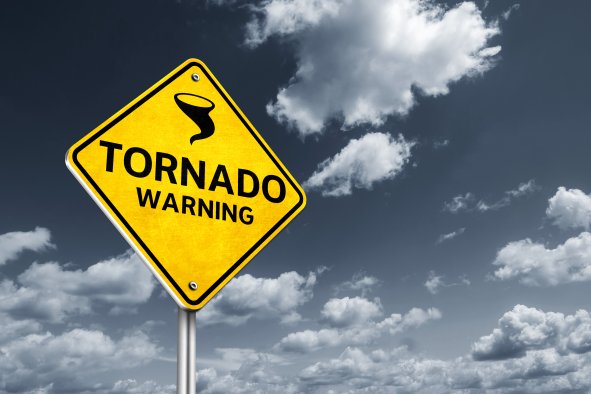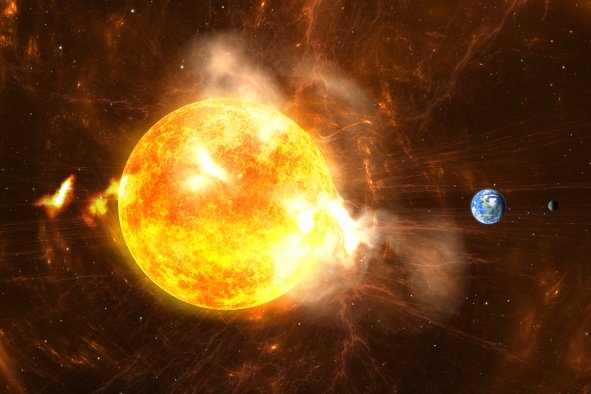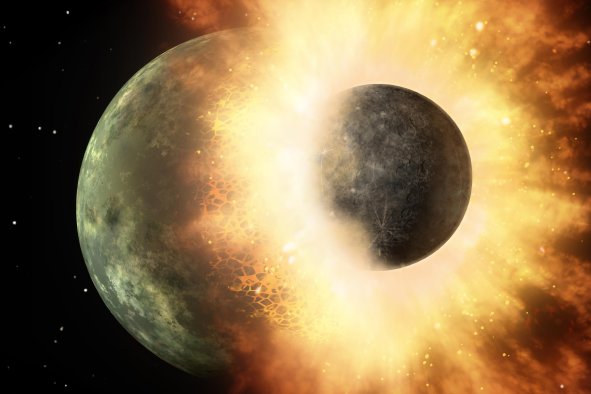The Northern Lights are set to be visible across the UK overnight as a huge solar storm is going to hit Earth.
America's National Oceanic and Atmospheric Administration (NOAA) reportedly issued its first severe solar storm warning since 2005 yesterday as a huge geomagnetic storm races towards Earth - meaning it could be the most powerful experienced in almost two decades.
It's set to hit overnight, and could supercharge the Northern Lights, making them visible in Scotland, northern England and Wales and even further south if conditions are right.
But the Aurora Borealis could also potentially interfere with infrastructure, including the power grid and satellites when it hits.
See the latest weather forecast where you are

The huge solar storm was created by successive coronal mass ejections (CMEs) that have left space a "mess", one space physicist told Sky News.
CMEs are when a large cloud of high energy plasma erupts from the Sun, into space, and currently there is a sunspot spitting a number out - aimed right at Earth.
Professor Mathew Owens, a space physicist at the University of Reading's department of meteorology, told Sky News: "Space is a mess right now, there's six or seven of these eruptions piling up right now between the Sun and Earth and we're predicting they're going to arrive at 2am [11 May]."
The Met Office told Sky News: "With clear spells likely for many on Friday night, there's an increased chance of aurora visibility for some, particularly across Scotland, Northern Ireland and parts of northern England and Wales.
"Given the right conditions, there is the chance it may even be visible further south."
How to see the Northern Lights
 Kirsty McCabe
Kirsty McCabe
Broadcast meteorologist
@kirstymccabeThe good news is that many places will have clear skies overnight and it's not going to be too cold either.
The best chance of seeing the Northern Lights will be from Scotland and Northern Ireland, although the northern and western isles will be cloudier at times.
Parts of northern England and North Wales may also get lucky, especially if you can get onto higher ground away from the light pollution of the towns and cities.
It's less likely you'll see them further south, but not impossible.
It might sound obvious, but as well as clear and dark skies you need to look towards the northern horizon, so a north-facing coast is a great place.
And even if you can’t see much with your eyes, try using your smartphone or camera. Even better if you have a tripod and can set up a long exposure.
Interestingly, the solar flares will also boost UV levels. Something to watch out for over the next couple of days in the sunshine.
But the impacts of the geomagnetic storm don't stop there, and the power grid could feel the effects of the recent solar activity too.
Professor Owens added: "The worry is there'll be effects on the power grid. I don't expect those to be significant but you never know."
Read more from Sky News:
Thunderstorm warning for large parts of UK
Section of M25 set to close
UK exits recession
The NOAA says: "Geomagnetic storms can ... potentially disrupt communications, the electric power grid, navigation, radio and satellite operations."
Satellites are also vulnerable because they can be affected directly by radiation caused by CMEs, while power grids are affected because the solar discharge can warp the Earth's own magnetic field, impacting them.
The solar flares and CMEs that have caused all the "mess" in space began on 8 May and picked up the pace in recent days.
The explosion of plasma and magnetic fields are focused in one sunspot that is actually visible from Earth and can be seen safely through a pair of eclipse glasses.
Keep up with all the latest news from the UK and around the world by following Sky News
Tap hereIt's difficult to predict the precise impacts, or exactly how far south the Northern Lights will reach because of natural uncertainty within forecasts and the difficulty of measuring the oncoming electromagnetic fields of the eruptions too far ahead of time.
This gives them "very little warning" to the potential severity of the impacts.
Disclaimer: The copyright of this article belongs to the original author. Reposting this article is solely for the purpose of information dissemination and does not constitute any investment advice. If there is any infringement, please contact us immediately. We will make corrections or deletions as necessary. Thank you.



